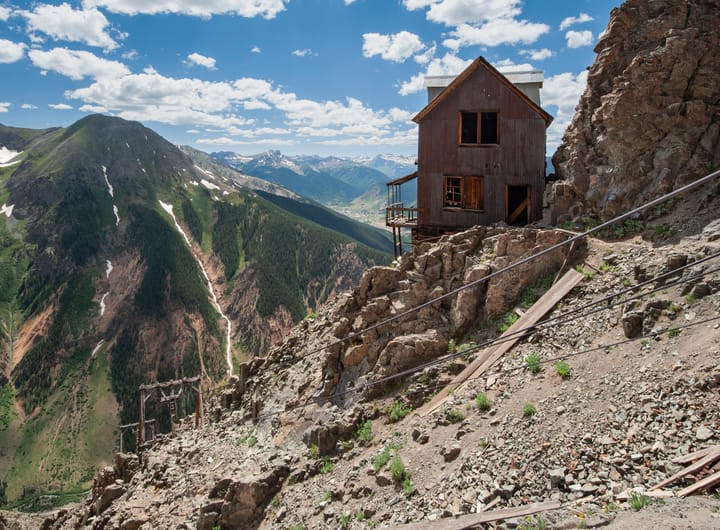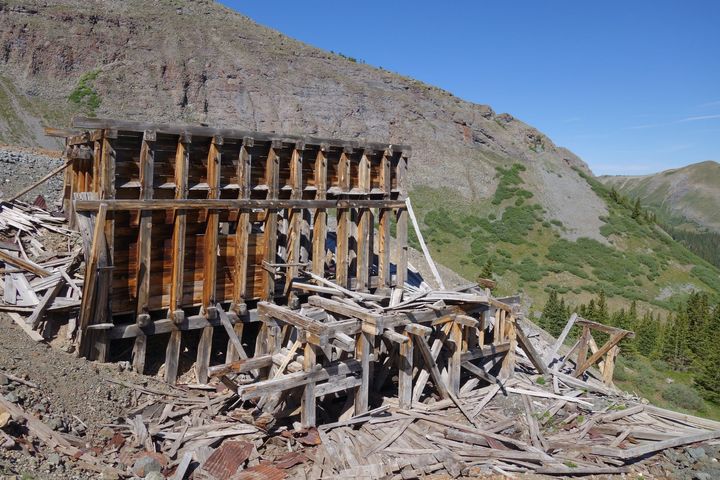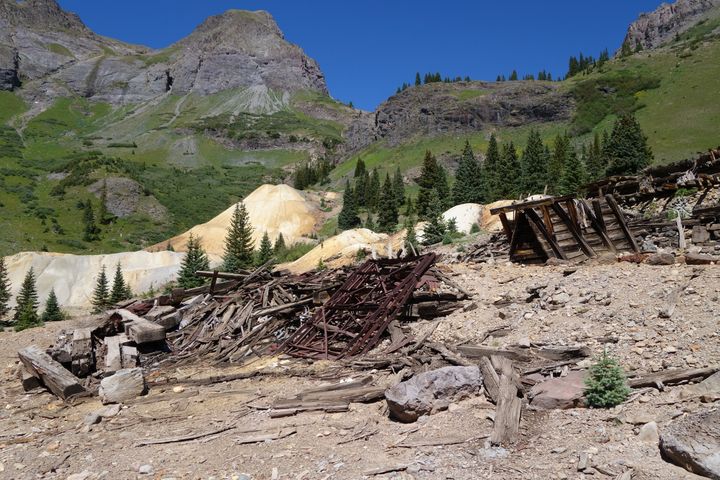The Bill Young was a small silver mine above the townsite of Animas Forks. The mine never amounted to much, but it still has some interesting remnants.
The mine was located in 1873 and was developed by a 250’ deep shaft. Levels were driven at irregular intervals, with a total of around 1000’ of workings. It sat idle from the 1880s until 1935 when the shaft was dewatered. Maintenance work was done and the mine was made accessible to 200’. Apparently, the lowest level of the mine was never dewatered. From this later work, two small shipments of ore were produced in 1936.



